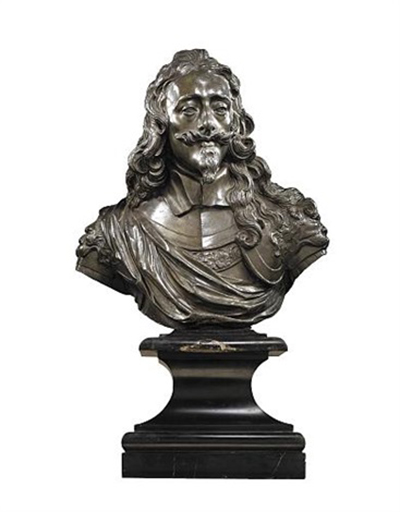Bust of King Charles I by Gian Lorenzo Bernini is an historic sculpture that set the pace for many artists of the time as it dominated the centuries.
The bust became the official portrait of secular absolutism because it had established itself as the official portrait for recognising King Charles I of England. Interestingly, the bust of King Charles I created by Jan Blommendael has long been thought to be the copy created by Gian Lorenzo Bernini. However, this is not the original copy because of the differences in the works.
This work is done with sophistication, exceptional fine cutting and illusionism. Also, it has elements of naturalism and figurative elements that is typical of Baroque arts which Gian Lorenzo was excellent at creating. The style utilised to capture this portrait is Baroque style. Gian Lorenzo Bernini had become accustomed to this style that he was an expert at it. By the time the bust of King Charles I work was complete, it was an admiration among many people. He received a large following that quickly propelled him to success as one of the masters of the Baroque arts.
In this bust, Gian Lorenzo Bernini used lead capable of producing durable and finely finished portraits. The lead has differentiated Gian’s work from Jan Blommendael work that was thought to resemble it. The latter uses marble, and this has made it easy to differentiate the works. King Charles I commissioned the sculpture because he had heard of the artist’s magnificent talents. He wrote to Gian Lorenzo Bernini recognising him as one of the most exalted of all men who exercised their profession with diligence. King Charles I implied that he was impressed by the work and despite not seeing him face to face, he rewarded him with expensive jewellery. Through art, Gian Lorenzo received much acclamation and the same King who commissioned the work, was fair enough to give him great a reward.
King Charles I was elated to see a young, vibrant and talented man deliver perfect sculptures. Therefore, he planned for him to create a portrait of Henrietta Maria (Charles's wife) only for his plan to be interrupted by the English Civil War. There is no current location for the portrait as the bust of King Charles I was destroyed in the Palace of Whitehall fire. Only copies of the sculpture exist in the form of images which depict the original bust of King Charles I by Gian Lorenzo Bernini.
On a request by King Charles I to create the portrait, Gian Lorenzo Bernini did not travel to England. He used the resources at his disposal. Anthony Van Dyck, a Flemish painter, had created a triple portrait of Charles I for Bernini. This painting would later become one of Gian Lorenzo's greatest inspirations enabling him to complete the bust without travelling to England to meet King Charles I. He used the view of Charles from three points to create a great piece that caught the attention of the King.




